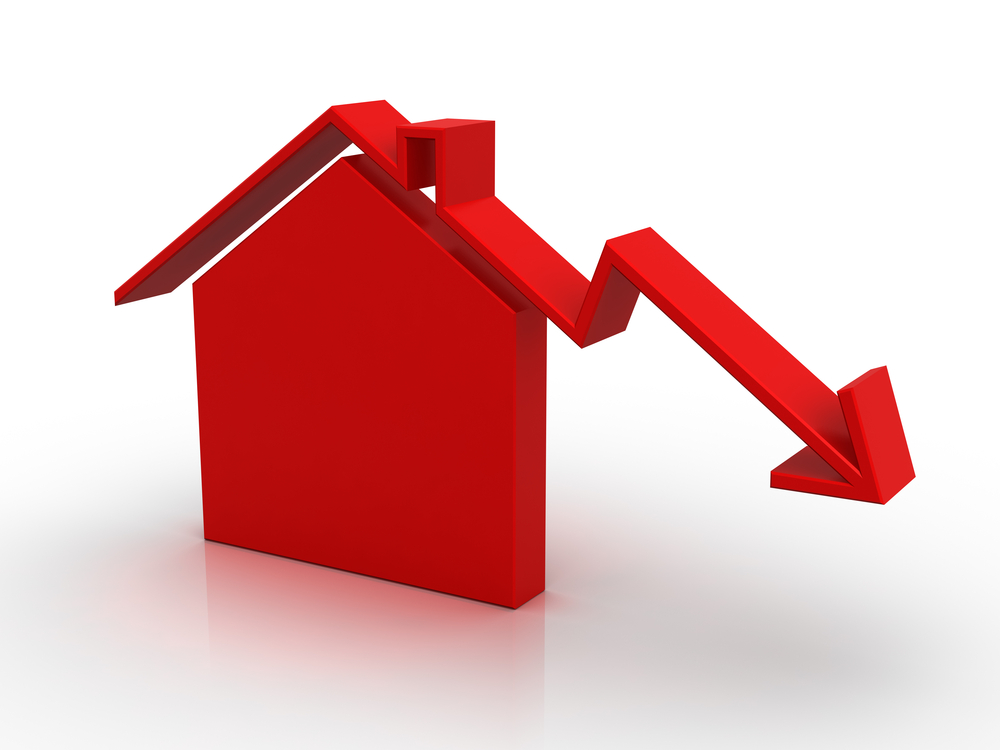
Economics & Growth | Europe | US

Economics & Growth | Europe | US
This article is only available to Macro Hive subscribers. Sign-up to receive world-class macro analysis with a daily curated newsletter, podcast, original content from award-winning researchers, cross market strategy, equity insights, trade ideas, crypto flow frameworks, academic paper summaries, explanation and analysis of market-moving events, community investor chat room, and more.
Mortgages are the largest form of household debt. And, until recently, the real cost of taking one out had never been lower (Chart 1). During 2021, interest rates on mortgage loans reached a historic low of 1.3% in nominal terms. Rising policy rates could, therefore, have dramatic implications for borrowers and residential real estate prices. But how bad could it be?
One way of determining how much house prices will decline in response to rate rises is by looking at the historical relationship between the two. This is what a new ECB working paper does. It finds that, what matters for real house prices is where the real interest rate starts. The lower the level, the larger the price declines. With real rates coming off their lowest levels ever, the results from the paper imply unparalleled declines in house prices in advanced economies.

Relationships can be teased out in either theoretical or empirical models. Both strands, according to the authors, find similar results. That is, a 1pp rise in real interest rates leads to roughly a 2.25% to 3.5% decline in real house prices. Most of this effect occurs in the first few quarters and is typically larger in the US (up to a 5% price decline). Currently, this could mean a 20% decline in real house prices, the largest in history.
Rarely, however, do these estimates take any non-linear relationship into account. According to asset pricing models, which treat houses as a cash-flow yielding investment (priced by discounting all future income streams, such as rents), house prices should fall more when real rates are lower. Could real house prices drop by more than 20% during this hiking cycle?
The authors use a quarterly panel of all euro area countries from 2010 to 2021. Key variables in the database include long-term interest rates and rent and house price indices. Real house prices are measured with the Residential Property Prices index deflated by the Harmonised Index of Consumer Prices – overall index. For rent, the authors use rentals for housing from the Indices of Consumer prices.
The real cost of borrowing for a house purchase, which reflects the real long-term interest rate, is proxied as the difference between the cost of borrowing for households for house purchase from MFI (domestic banks) interest rate statistics and a proxy for expected long-term inflation. The cost of borrowing covers all interest payments on loans taken to purchase a property, but no other possible costs. The expected long-term inflation is assumed to be the ECB’s inflation target of 2%.
The real cost of borrowing (Chart 1), has declined over the last decade. This has coincided with a rise in real house prices and a decline in real mortgage costs (Chart 2).

The aim is to uncover the relationship between real interest rates and real house prices. Much of the literature assumes this to be linear, but the authors test whether a non-linear relationship (i.e., larger house price changes at higher or lower interest rates), is better suited. And it is.
A non-linear model can explain movements between the two variables 1.2-3.5pp better than a linear one. Moreover, the non-linear relationship gains even more explanatory power over a linear one towards the end of the sample, when the cost of borrowing was particularly low.
In numbers, the authors find that a 0.1pp increase in real mortgage rates leads to an average euro area real house price decline of 2.41%. That is huge. It is three- to eight-times higher than existing literature suggests. It is also twice as large as the predicted decline pre-2013, when the real cost of mortgages was closer to 1.5% (Chart 3).

The results are staggering, and I wonder whether the heightened sensitivity of house prices to real rates is because they are looking at a period where real borrowing costs have never exceeded 2%.
In the US, where such an analysis is easier because it covers a single country, real rates have reached far greater ranges, -8% to +8% (Chart 4). Nevertheless, the 13pp increase in the real Fed Funds Effective rate led to roughly a 20% decline in the 80s. Around the Global Financial Crisis (2007-08), a smaller increase in real rates (5pp) led to an even larger 23% decline.

It is possible that real house prices are becoming more sensitive to declining borrowing costs. If the paper’s results are true, and we expect real rates in the US to reach -1.5% again, real house prices could fall 60% (Chart 5). This would bring prices in real-terms back to a level last seen in the 1970s.

In this inflationary world, real prices matter. This paper shows that the potentially large hiking cycles currently underway in advanced economies could have dramatic implications. The real value of assets, in this case houses, could return to 20th century levels. As well as eroding a large source of wealth, such house price declines have typically been associated with banking crises. There could be troubling years ahead…
Spring sale - Prime Membership only £3 for 3 months! Get trade ideas and macro insights now
Your subscription has been successfully canceled.
Discount Applied - Your subscription has now updated with Coupon and from next payment Discount will be applied.